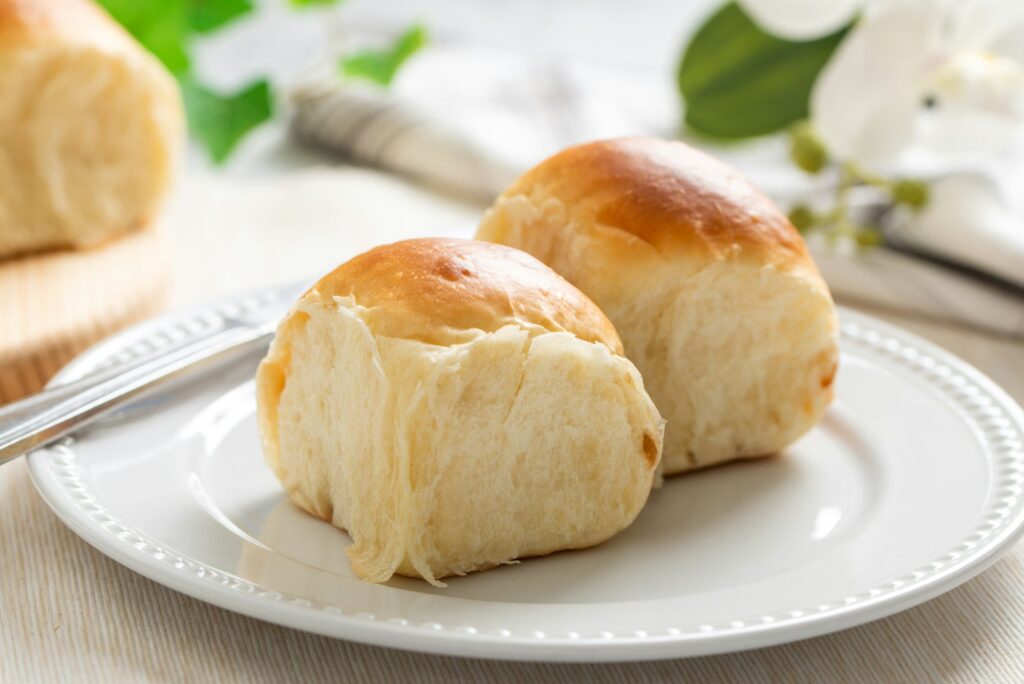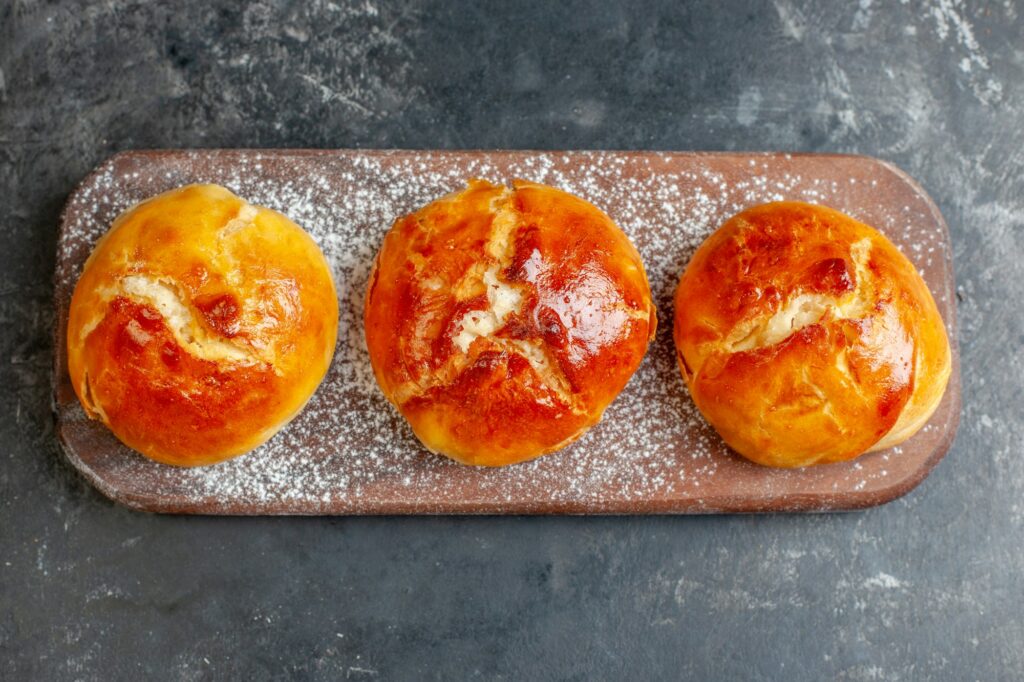Dinner rolls, those soft, fluffy staples at meals, often carry the warmth and comfort of home cooking. Yet, many bakers, both novice and experienced, encounter a common issue: tough dinner rolls. Understanding the factors that contribute to this toughness is crucial for anyone looking to perfect their bread-making skills. This guide delves into the science and art of making dinner rolls, highlighting the importance of ingredients, techniques, and common mistakes to avoid. By exploring the basics of bread making, the factors contributing to tough dinner rolls, and expert tips for achieving soft and fluffy results, we aim to equip you with the knowledge to create perfect dinner rolls every time.
Understanding the Basics of Bread Making
The journey to perfect dinner rolls begins with understanding the key ingredients: flour, water, yeast, salt, and fats. These components work together to form the dough, but their interactions, particularly the science of gluten development, play a pivotal role in the texture of the final product.
- Flour: The backbone of any bread, flour’s protein content is crucial for gluten formation. Gluten strength and dough elasticity are vital for the bread’s structure, affecting its softness and chewiness.
- Water: Acts as a hydrator, turning flour into a cohesive dough. The hydration level influences the dough’s consistency and the bread’s crumb structure.
- Yeast: The leavening agent that causes dough to rise, creating light and airy rolls. The fermentation process not only leavens the dough but also contributes to the bread’s flavor.
- Salt: Enhances flavor and regulates yeast activity, ensuring a balanced rise.
- Fats: Ingredients like butter or oil tenderize the dough, contributing to the softness of the rolls.
The role of kneading cannot be overstated. It develops the gluten network, essential for trapping gas produced during fermentation. However, the kneading technique and duration significantly impact the dough’s elasticity and, consequently, the texture of the dinner rolls. Too little kneading results in dense rolls, while over-kneading can lead to toughness.
Understanding these basics sets the foundation for troubleshooting common issues and experimenting with techniques to achieve the perfect dinner roll.
Factors Contributing to Tough Dinner Rolls
Identifying the culprits behind tough dinner rolls is key to avoiding common pitfalls. Several factors can contribute to this undesired texture, from the kneading process to the type of flour used, and even the fermentation and baking conditions.
Over-kneading:
Incorrect Flour Type:
The protein content in flour affects gluten formation. Using a high-protein flour, like bread flour, when a recipe calls for all-purpose flour can lead to tougher rolls due to the increased gluten strength. Conversely, understanding the role of hydration level in relation to flour type can help achieve the desired dough consistency. King Arthur Baking’s guide on flour types offers invaluable insights into selecting the right flour for your dinner rolls.
- Yeast Fermentation: The rise of the dough, or lack thereof, can significantly impact the texture of dinner rolls. Over-proofing leads to a collapse in the structure, creating dense and tough rolls, while under-proofing results in insufficient rise and tight crumb. Managing the proofing environment—temperature and humidity—is key to successful yeast fermentation.
- Oven Temperature and Baking Time: Finding the right balance is essential. Too high an oven temperature can cause the exterior to harden quickly, preventing the rolls from expanding fully. Meanwhile, insufficient baking time might not allow the interior to develop properly, affecting the moisture content and resulting in a gummy texture.
By addressing these factors, bakers can significantly improve the texture of their dinner rolls, making them lighter and more enjoyable.
Techniques to Avoid Tough Dinner Rolls
Achieving perfect dinner rolls is an art that requires precision and understanding of various baking techniques. Here are some strategies to ensure your rolls come out soft and fluffy every time:
Choosing the Right Flour:
The choice between all-purpose and bread flour can greatly impact your dinner rolls. All-purpose flour, with its moderate protein content, is typically enough for soft rolls. However, some recipes might benefit from the higher protein in bread flour. This is especially true when a chewier texture is desired. The key lies in understanding the end goal. Consider the texture you aim for and how the flour’s hydration capacity can support it. Moreover, the choice of flour influences the dough’s behavior during kneading and rising. Thus, selecting the right flour is a crucial step in the baking process. It sets the foundation for the texture and quality of the final product.
Hydration Ratio:
Hydration plays a pivotal role in dough consistency. A well-hydrated dough tends to be more pliable and easier to work with. This, in turn, contributes to a softer crumb in the baked rolls. The trick is to adjust the water content thoughtfully. Consider both the type of flour you’re using and the ambient humidity. These factors can significantly affect the dough’s hydration needs. A slight adjustment in water content can lead to a noticeable difference in the dough’s texture and the rolls’ softness. Therefore, paying attention to hydration is essential for achieving the perfect dinner roll.
Kneading Techniques to Avoid Tough Dinner Rolls:
Kneading is more than just mixing; it’s about developing the dough’s gluten structure. Finding the right balance is crucial. You want to knead enough to form a strong gluten network but stop before the dough becomes tough. The windowpane test is an invaluable technique here. It allows bakers to check if the dough has been kneaded sufficiently. The test involves stretching a small piece of dough to see if it can form a thin, translucent membrane without tearing. Achieving this balance ensures the dough is ready for the next steps, leading to dinner rolls that are just right in texture.
Proofing Tips:
The proofing stage is where the magic happens, and the dough transforms in volume. Controlling the proofing environment to ensure it is warm and moist enough can encourage optimal yeast activity. The Fresh Loaf offers detailed explanations on proofing and its effects on bread texture.
Incorporating these techniques into your baking process can lead to consistently better results, with dinner rolls that are a delight to serve and enjoy.
Common Mistakes to Avoid
Even with a good understanding of bread-making principles, certain pitfalls can lead to less-than-ideal dinner rolls. Being aware of these common mistakes can help you steer clear of tough bread.
Overworking the Dough:
It’s tempting to keep kneading the dough in the hope of achieving the perfect texture. However, over-kneading can lead to a tight gluten network, making the rolls tough. Look for signs of sufficient kneading, such as a smooth, elastic dough, and resist the urge to continue past this point.
Misjudging Proofing Time:
Both under-proofing and over-proofing can have detrimental effects on the texture of your dinner rolls. Under-proofed dough lacks the necessary gas bubbles for a light, airy structure, while over-proofed dough can collapse, leading to dense rolls. Use visual cues and gentle dough testing to determine when the proofing is just right.
Oven Pitfalls:
Uneven baking and incorrect crust formation can ruin your dinner rolls. Ensure your oven is preheated to the correct temperature and consider rotating the baking tray halfway through to promote even baking. Additionally, avoid opening the oven door too frequently, as this can lead to temperature fluctuations that affect the bake.
By avoiding these common mistakes, you can improve the quality of your dinner rolls, making them more likely to turn out soft and delicious.
Expert Tips to Say Goodbye to Tough Dinner Rolls
For those looking to elevate their dinner rolls to the next level, here are some expert tips that can make all the difference:
- Ingredient Quality: The freshness and quality of your ingredients can significantly impact the outcome of your bread. Fresh flour has better gluten-forming potential, leading to a better rise and softer rolls. Similarly, using fresh yeast can ensure a more reliable fermentation process.
- Fat Incorporation: The type and amount of fat used can affect the softness of your rolls. Butter, for its flavor and richness, is often preferred, but oil can also produce tender rolls. The key is to integrate the fat evenly throughout the dough.
- Advanced Techniques: Incorporating techniques like autolyse, where flour and water are mixed and left to rest before adding other ingredients, can improve gluten development without over-kneading. Similarly, using a tangzhong or poolish—pre-ferments that add moisture and flavor—can enhance the texture and taste of your rolls.
For further insights into the science behind bread making, Science of Cooking provides a comprehensive overview of the principles at play. By applying these expert tips and techniques, you can achieve dinner rolls that are not only soft and fluffy but also rich in flavor and perfect in texture.
FAQs Regarding Tough Dinner Rolls
Q: Why do my dinner rolls turn out hard?
A: Often, hard dinner rolls result from several factors. Over-kneading is a common cause. It tightens the gluten network excessively. Incorrect flour type also plays a role. High-protein flours can make the bread tough. Baking issues contribute as well. These include too high oven temperatures or not enough moisture during baking. Each factor disrupts the delicate balance needed for soft rolls.
Q: How does kneading affect the texture of dinner rolls?
A: Kneading is crucial for gluten development. This process gives the rolls their structure. However, there’s a balance. Over-kneading tightens the gluten too much. Consequently, this leads to tough rolls. Aim for a dough that’s smooth and elastic but not overworked.
Q: What is the best flour to use for soft dinner rolls?
A: All-purpose flour is usually the best choice for soft dinner rolls. Its moderate protein content supports a tender crumb. In contrast, bread flour, with higher protein, might make the rolls too tough. The right flour ensures the desired softness and texture.
Q: Can over-proofing lead to tough bread?
A: Yes, over-proofing is a problem. It causes the dough to collapse. This results in dense and tough rolls. Proper proofing times are essential. They ensure the rolls are light and airy. Monitor the dough closely during this stage.
Q: How can I ensure my dinner rolls are soft and fluffy?
A: Several steps can help. First, choose the right flour. Avoid over-kneading to prevent toughness. Ensure the dough is properly hydrated. Control the proofing environment carefully. Incorporating fats like butter helps. Also, consider advanced techniques like autolyse. These methods contribute to softer, fluffier rolls.
Conclusion: No More Tough Dinner Rolls
By avoiding common mistakes and applying advanced techniques, bakers at all levels can enhance the quality of their dinner rolls, making them a delightful addition to any meal.
In conclusion, the journey to perfect dinner rolls is a blend of science and art. It requires attention to detail, understanding the role of each ingredient, and mastering techniques that influence the dough’s development. Whether you’re a novice baker or an experienced chef, the key to soft, fluffy dinner rolls lies in balancing the elements of gluten development, hydration, fermentation, and baking conditions.
Remember, baking is a process of continuous learning and experimentation. Each batch of dinner rolls offers an opportunity to refine your skills, experiment with new techniques, and discover what works best in your kitchen environment. Don’t be discouraged by setbacks; instead, view them as stepping stones towards mastering the art of bread making.
We hope this guide has provided you with valuable insights and tips to improve your dinner roll baking endeavors. Happy baking, and may your dinner rolls always be soft, fluffy, and utterly irresistible!



